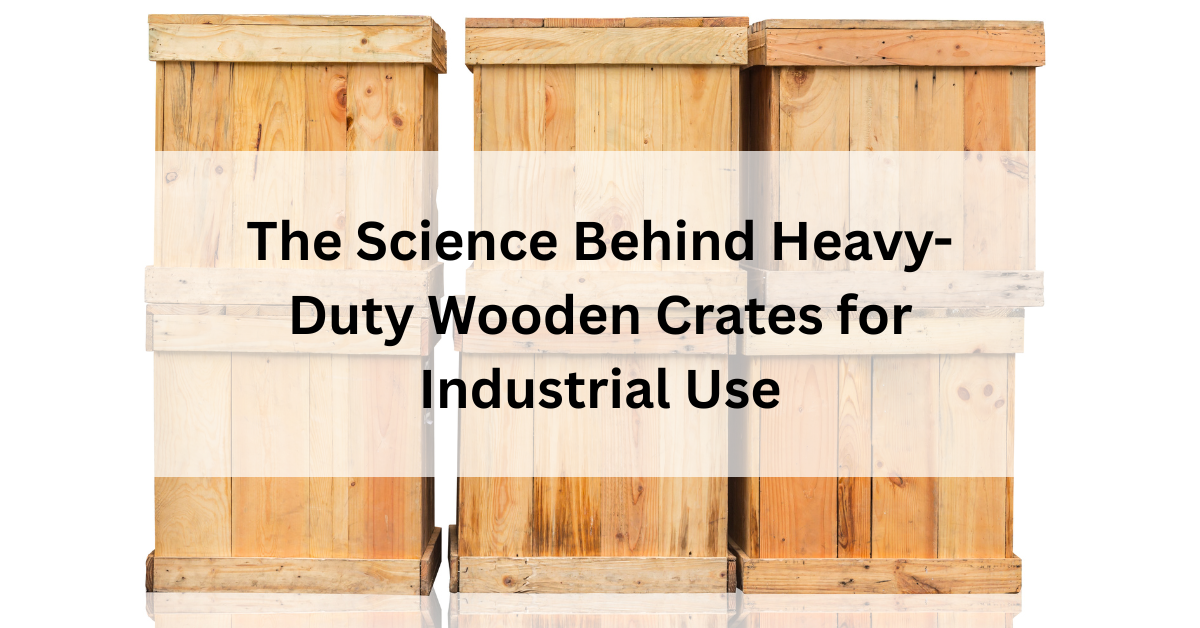In industrial logistics, precision matters—and so does protection. From high-value machinery to sensitive electronics, transporting critical assets safely isn’t just about logistics planning, it’s about engineering the right packaging. That’s where the wooden crate comes in—not as an afterthought, but as an essential component of your operational strategy.
Far beyond basic storage boxes, wooden crates are purpose-built structures designed to absorb shocks, handle heavy loads, and meet international export requirements. Whether you’re preparing for overseas shipping, long-term warehousing, or a one-time project move, choosing the right crate can significantly reduce the risk of damage and loss.
In this article, we break down the engineering behind heavy-duty wooden crates, explore how different materials and design choices affect performance, and show how Kaibeng delivers high-quality wooden crating solutions for industrial needs in Singapore.
Why Wooden Crates Are Essential for Industrial Applications
A wooden crate isn’t just a box—it’s a protective structure designed to shield valuable contents from impact, vibration, moisture, and stacking pressure during transport or storage.
Industries such as aerospace, oil & gas, manufacturing, electronics, and logistics rely heavily on wooden crates for one simple reason: they work. They are sturdy, stackable, customizable, and compliant with international shipping standards like ISPM 15, making them ideal for both local handling and global export.
Material Matters: What Makes a Crate “Heavy-Duty”?
The performance of a wooden crate depends largely on the quality of materials used. At Kaibeng, we carefully select and test wood to ensure strength, consistency, and environmental resistance.
🔹 Hardwood vs. Softwood
- Hardwood (e.g., oak, birch): Offers excellent structural integrity and load-bearing capacity, ideal for long-term storage or reusable crates.
- Softwood (e.g., pine, spruce): Lighter and more cost-effective, suitable for export crates and one-time shipments.
We often combine hardwood and softwood depending on the load requirements, environmental exposure, and cost considerations. Moisture content is also carefully controlled to avoid warping, mold, and weakness under pressure.
Design Engineering: It’s Not Just a Box
The design of a wooden crate determines how well it protects its contents. Industrial-grade crates are engineered with precision to distribute weight, absorb shocks, and prevent movement inside the crate.
Key Features of a Heavy-Duty Wooden Crate:
- Base Support System: Reinforced skids or pallets integrated into the base for forklift handling and weight distribution.
- Shock Absorption: Foam padding, internal bracing, or floating bases to reduce vibration and impact damage.
- Lid and Closure: Secure lids with fasteners or hinges that provide tight seals against moisture or dust.
- Ventilation or Sealing: Depending on the contents, crates can be built for airflow (electronics) or fully sealed (moisture-sensitive equipment).
At Kaibeng, every wooden crate is custom-designed using CAD tools and structural calculations to match your product’s exact weight, size, and sensitivity.
Testing for Strength and Durability
Before a wooden crate is deployed for industrial use, it must pass strict quality checks and tests. At Kaibeng, we simulate real-world handling conditions to ensure our crates perform under pressure.
Our Testing Protocols Include:
- Compression Tests: Ensures the crate can support stacking loads during warehouse storage or container shipping.
- Drop Testing: Simulates accidental drops or rough handling during transit.
- Vibration Testing: Mimics the effects of road or sea transportation to verify internal protection systems.
- Water and Moisture Resistance: For crates destined for humid or wet environments, we test for wood swelling and seal failure.
These tests ensure that our crates can handle extreme conditions while maintaining structural integrity.
How Kaibeng Delivers Industrial-Grade Wooden Crates in Singapore
As one of the leading wooden crate manufacturers in Singapore, Kaibeng Wooden Case Mfg Pte Ltd offers complete, end-to-end solutions for heavy-duty industrial packaging.
Here’s how we deliver performance and peace of mind:
✅ Tailor-Made Designs: No two machines or cargo are the same. We build each wooden crate from the ground up to suit your product’s size, weight, and fragility.
✅ Export Compliance (ISPM 15): Our crates are heat-treated and certified for international shipping, ensuring smooth customs clearance worldwide.
✅ Fast Production in Singapore: Local manufacturing means faster lead times and better quality control.
✅ On-Site Packing Support: Need help packing or loading? Our experienced team is available for on-site assistance.
✅ Eco-Friendly Options: We offer sustainable wood sourcing and encourage recycling or reuse of crates wherever possible.
Applications of Heavy-Duty Wooden Crates
Kaibeng’s wooden crates are used in a wide variety of industrial scenarios:
- Machinery Relocation: Crates built to support vibration-sensitive and high-weight equipment.
- Electronics Shipping: Anti-static linings and foam for delicate instruments.
- Overseas Export: Rugged crates that endure long transit times and multiple handlers.
- Art and Antiques: Custom-built crates with protective linings for high-value objects.
If you can name it, we can crate it.
Conclusion
Heavy-duty wooden crates play a critical role in modern industrial logistics. From material selection and structural design to testing and compliance, every crate must be engineered for durability and safety.
At Kaibeng, we bring together decades of experience, modern engineering, and a commitment to quality to deliver custom wooden crates you can trust. Whether you’re shipping machinery across Singapore or exporting sensitive equipment overseas, we’re your one-stop solution for protective wooden packaging.
